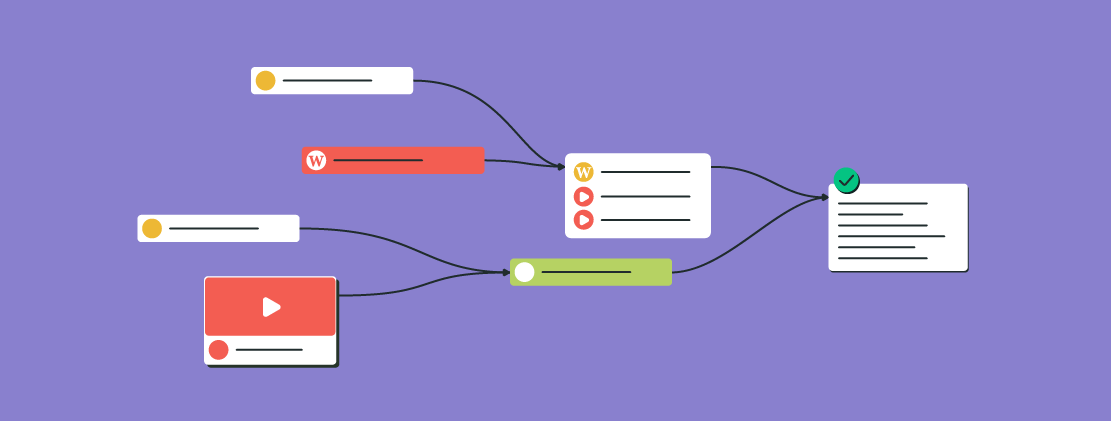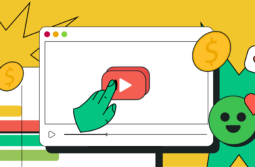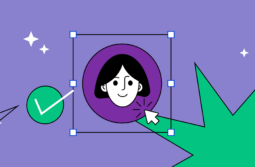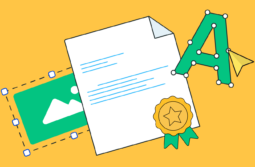Everyone knows the global eLearning market was on the rise even before the pandemic hit. Yet, lockdowns and looming economic crises have given it an extra boost.
Education and business niches had to adapt from physical to distance work and training, creating hundreds of various online courses, comfortable and flexible for users to take. Today, eLearning is trending and growing, the competition is fierce, and online course creation requires precise planning and structuring for user attraction and engagement.
But there’s a catch. While your well-planned course structure can engage new students, what will motivate them to complete its every module and not quit halfway? It’s a well-written plan for each lesson your online course entails.
In this blog post, we’ll reveal the components and structure of a stellar online lesson plan and share five steps to writing it for learners to crave more.
Content:
What is a lesson plan?
A lesson plan is a detailed guide for a teacher or online course creator on what information to share with students at a particular learning session and how to present it so students would get engaged and accomplish their learning goals.
In traditional education, teachers work with prescribed curriculum requirements and often use standard templates for their lesson plans. When it comes to creating online courses, pre-made templates will hardly work, given the online lesson specifics:
- there’s no teacher to control motivation and engagement;
- online course creators can’t predict students’ learning styles, so they need to consider different content types, timing, and hooks at lessons for students to visit the next one and finish the course.
Depending on the course niche, topic, and target audience, you’ll need to craft custom templates for your lesson plans. The quality matters here: numbers have it that 90% of users give up online courses because of the dull and low-quality lessons they get.
The components of online lesson planning
Before you sit and write a plan for every lesson inside your online course modules, it’s critical to understand what components the lesson planning process includes.
According to the Madeline Hunter Lesson Plan Model, these components are seven. To prescribe them, you first need to specify your learning objectives.
Answer the question, “How can the learners use their new knowledge after completing this lesson?” Once you have a S.M.A.R.T. goal for your lesson, you’ll know how to structure it, what materials to give, how to check student understanding, and how to finish it.

When planning a lesson, consider these components:
- Anticipatory set. Something that hooks students and gets them involved in the upcoming lesson.
- Purpose. A short overview of the lesson objective for students to understand what they will learn and how they will benefit from it.
- Input. A lesson outline with a set timeline for each section.
- Modeling. Specifying the materials a lecturer will use during a lesson, activities to involve students, etc.
- Checking for understanding. Deciding on questions, quizzes, or other interactive elements to hold students’ attention between lesson parts.
- Practice (guided and independent). Exercises and other activities during a lesson, an assessment for students to check what they’ve learned.
- Closure. Bringing everything together, with the takeaways for students and a “teaser” of the next lesson to motivate learners to join.
The structure of your lesson plan
It may vary depending on your lesson objectives, the materials you use, and the timing you have. It would help if you knew a timeline for every online lesson within your online course beforehand. Thus, you’ll understand how long each component within your structure needs to be to meet the deadline.
Here’s the basic structure of a lesson plan:
- Hook (5 minutes). Get them involved; answer the “What’s in there for me?” question.
- Introduction (10 minutes). Provide a short overview of the topic, explain what they will learn, and how the lesson will represent it.
- Presentation (the remaining time). Introduce the prepared materials according to your prescribed input modeling.
- Practice (10-15 minutes). Set this time for interactive elements (checking for understanding questions) and other exercises you’ve prepared.
- Takeaways and assessment (5 minutes). Finish a lesson, summarize students’ new knowledge, and assign homework if applicable. Think of a “teaser” that could motivate students to visit your next online lesson.
You can always adjust it to your online course specifics.
Writing a plan for your online lesson
Now that you have all the components and know the approximate structure of your online lesson, it’s time to write its plan step by step.

Start with a warmer
Think about a hook you’ll use to warm up students and get them interested in what will happen during a lesson. It can be a question, a recap on the previous module of the course, a surprising insight on the topic you’ll discuss, etc.
Think of it like a hook in writing. The first few sentences matter as they help the audience understand if your content is relevant to their needs and if it’s worth spending time on it. Start your online lesson with an objective explaining what students will get after completing it. They need a hook to get involved and start listening to a lesson’s material.
What can be a lesson warmer:
- an intriguing question;
- a rare fact about what you’ll discuss;
- a joke or an anecdote, if applicable (consider your niche, tone of voice, course topic, and target audience);
- a surprising statistic;
- a controversial statement related to the topic;
- a quick recap on the previous lesson referencing today’s discussion;
- a relevant promise to evolve curiosity and motivate students to stay with you.
Provide a lesson overview
It comes right after a warmer, and some instructors don’t divide these two blocks but write them as one in their lesson plans. The goal is to create the need for students to learn the information you’ve prepared.
Write a short overview communicating the importance of the lesson based on its objectives. Consider the target audience: What are their needs, pain points, or objections? Knowing this, you’ll write a lesson overview encouraging students to continue learning.
Think of it like an introduction in writing:
- Introduce your lesson.
- Make a promise: Why students need to stay with you.
- Make a preview: What exactly will they get?
Present information
This part of your lesson plan refers to outlining. Divide it into modules (like H2, a la lesson subtopics) to understand how you’ll present the information and develop a context.
Given you’ve prepared the materials beforehand, your task now is to organize them throughout a lesson. Remember to add examples that spark interest and help students relate to them. When choosing materials for your online lesson, diversify them so students don’t get bored. Video presentations are great, but they can’t hold attention forever. You can try other formats:
- educational infographics and other visuals (photos, graphs, tables, etc.);
- interactive elements like tests, quizzes, yes/no questions, and slide shows;
- textbooks, books, or online materials to recommend to students during your lesson.
Add materials that can help you reach a lesson objective best, and consider the tech features of a platform where you plan to host your online course. Does it allow publishing the content types you’ve prepared?
The same goes for the practice time you plan to include. Will it be possible to organize any “checking for understanding” activities between theory modules to keep students engaged?
Allow for practice time
When writing a lesson plan according to your timeframe, remember that you’ll also need to set aside some time for practice. Think about activities students will do during a lesson.
Include the “checking for understanding” minutes between modules if your online course platform allows it.
It’s a great instrument to keep students engaged and help them remember the information you share. They’ll be more attentive listeners if they know they need to answer a question or take a short quiz to jump to the next module.
The most appropriate variant here would be a short questionnaire. Consider multiple-choice, true or false, or matching questions. They don’t take much time and effort to answer and are engaging enough. Also, you can add a “Skip” option for students to continue listening with no practice.
Wrap it up and evaluate the lesson
The final block of your online lesson plan is closure. Think about how to finish it and what takeaways to give to students so they can sum up their new knowledge. Here you:
- Wrap up the information by reviewing the lesson’s main points.
- Give an assessment if applicable. It can be a short online test to complete after the lesson, a book or online source suggestion, some freewriting session for students to practice what they’ve learned, etc.
- Tell what they’ll get in the next lesson. Provide a kinda “cliffhanger” or “teaser” to motivate students to join the next session of your online course.
The goal is to help students bring the material together, understand what they’ve learned, and not to give up your online course halfway.
Takeaways
While your online course topic and overall structure are critical for its conversion, it’s not enough. Creative titles and clear-structured modules can engage users but they won’t hold them if lessons within those modules are a mess. And that’s where a detailed lesson plan comes on stage!
Not only does it help break the course materials up into logical sections, but it also allows you to organize every lesson so it meets your objectives and your target students’ needs.
Once you decide on the course structure and have plans for its lessons, try our online course builder to bring this product to life.






![How to Start an Online Course Business [2024 Guide]](https://www.spcdn.org/blog/wp-content/uploads/2024/09/course-business-cover-255x167.png)


